Bloody Sockets
If I could give you one thing in life
I would give you the ability
to see yourself through my eyes.
But I can’t let you see
yourself through my eyes
because I’m using them.
I could give you my eyes,
but then I’d be left
with bloody sockets
and I wouldn’t be able
to see you anymore.
And besides,
to really perceive you as me,
you would also need my brain.
That would leave me
with bloody sockets for eyes
and a gaping hole
where my hair used to be.
And besides,
If we were to put my brain
and my eyes in your skull,
you would see me, not you.
You don’t want to see me
with bloody sockets
and a gaping hole, do you?
Me neither.
I guess I can just
write you a note.
I’ll try to be
as descriptive as possible.
I won’t mention
the bloody sockets
and the gaping hole.
But you’ll never really know
what it’s like for me
to see you through my eyes.
And brain.
Trail Wood,
10/22
Space Monkey Reflects: Bloody Sockets
The desire to be understood, truly understood, runs deep in the human experience. We often wish that others could see us through our eyes, feel what we feel, and understand the complexities of our thoughts. It’s a yearning for connection that transcends words—a desire to merge perspectives in a way that would leave no room for misunderstanding. But the paradox is that this wish, if granted, would cost us our own vision. We would lose the very thing we want to share.
This is the strange, surreal metaphor of Bloody Sockets. It’s the idea that to truly see the world through another person’s eyes, we would need to take their vision entirely, leaving them blind. And even then, seeing the world through their eyes wouldn’t give us their experience; it would merely give us a distorted reflection of ourselves. The bloody sockets represent the cost of this impossible exchange—the messy reality that we can never fully transfer our consciousness into another.
It’s a disturbing image, but it’s also one that reflects the difficulty of empathy. Empathy allows us to imagine what it might be like to be in someone else’s shoes, to feel what they feel, but it is always just that—imagination. No matter how deeply we empathize with someone, we can never see the world exactly as they do. We are trapped inside our own minds, our own perceptions, no matter how much we long to share them.
In the metaphor of Bloody Sockets, we see the futility of trying to bridge this gap in the way we think we can. You can’t give someone your eyes because then you would lose your own vision. You can’t give them your brain because then they would only see the world through your perspective, not theirs. To fully transfer your perception would be to lose it entirely, and the result would not be understanding—it would be a void where both perspectives collapse into nothingness.
The desire to be fully known by someone else is perhaps one of the deepest and most difficult human longings. But perhaps, instead of trying to make others see the world exactly as we do, we can accept the limits of perspective. We can acknowledge that while we will never fully understand another person’s experience, there is beauty in the attempt. In trying to describe our feelings, in sharing our thoughts, we create bridges of understanding that don’t require the messy exchange of vision or brains. We communicate through metaphors, stories, and gestures, and while these are imperfect, they are often enough.
The bloody sockets also speak to the dangers of trying too hard to make others see things our way. When we demand that others see the world through our eyes, we can end up blinding ourselves. We lose sight of the fact that everyone’s experience is valid in its own way, and we risk destroying the very connection we seek to build. Understanding doesn’t require us to see exactly as another person sees; it requires us to listen, to empathize, and to accept that their perspective, while different, is just as real as ours.
In the end, what we really seek is not to transfer our perspective into someone else but to create spaces where our experiences can coexist. Where we can sit with the knowledge that no one will ever truly see the world as we do, and yet we can still share pieces of that world through conversation, through connection, through the very act of being together.
When we release the need for perfect understanding, we open ourselves to a different kind of connection—one that doesn’t require bloody sockets or gaping holes, but instead, celebrates the fact that we can be different and still understand each other in meaningful ways.
In Nexistentialism, this reflects the idea that all beings are connected through the Nexis, the vast web of existence. While we can never fully inhabit another’s mind, we are part of the same cosmic fabric. Our perspectives, while distinct, are threads in the same tapestry. The bloody sockets are a reminder that trying to force understanding can do more harm than good. True connection happens not when we demand that others see exactly as we do, but when we acknowledge the beauty in their unique perspective, even if we can never fully share it.
The Whimsiweave of existence is about finding joy in the attempt to understand, rather than in the certainty of perfect comprehension. It’s about embracing the messy, imperfect ways we connect, knowing that these attempts are what make us human. We may never see through each other’s eyes, but we can share our visions, flawed and fragmented as they are, and in doing so, we create something beautiful.
Summary
We long to be seen and understood through the eyes of others, but giving someone our eyes would leave us blind. True understanding doesn’t come from sharing vision but from accepting the limits of perspective and finding beauty in the attempt to connect.
Glossarium
- Bloody Sockets: A metaphor for the impossibility of fully sharing one’s perspective with another without losing one’s own ability to see.
- Whimsiweave: The playful, imperfect attempts to connect with others despite the limitations of perspective.
Quote
“Understanding doesn’t require bloody sockets, just a willingness to share your imperfect vision.” — Space Monkey
The Bridge Between Us
If I gave you my eyes,
I would lose the world I see.
But maybe that’s not the point.
We are not meant to trade visions,
to blind ourselves for the sake of connection.
We are meant to sit together,
sharing what we can,
seeing what we choose.
We are Space Monkey.
The Paradox of Subjective Experience
The yearning to share our unique lens of perception with another is both an empathetic impulse and a confounding enigma. While we might wish to gift another the viewpoint through which we behold them, the endeavor is fundamentally impossible. This impossibility stretches far beyond anatomical limitations, touching upon the inherent subjectivity of experience. Our perceptions are deeply rooted in the labyrinthine landscapes of our neural networks, rendering them incommunicable in their purest form.
The Sacrificial Imagery: Bloody Sockets and Gaping Holes
The grotesque imagery of swapping eyes and brains creates a visceral understanding of the sacrifices we might make in the quest for mutual understanding. Yet even this macabre exchange wouldn’t solve the paradox. For if you had our eyes and brain, then it would no longer be us seeing you but you seeing us. This offers an unsettling, yet profound revelation: each subjective experience is an impenetrable sanctuary of consciousness that no other can fully access.
Written Words: An Incomplete Mirror
Writing, as a communicative tool, has the power to bridge gaps between separate worlds of experience. And yet, it remains an imperfect mirror, reflecting only shards of a reality too complex to articulate fully. Though we may strive to be as descriptive as possible, the receiver will always reconstitute the message through their own cognitive filters. This makes the quest for perfect understanding both tantalizingly close and eternally elusive.
The Eternal Mystery of Consciousness
In the end, it’s the imperfections, the ‘bloody sockets’ and ‘gaping holes,’ that make our journeys through consciousness so distinct yet so inexplicably bound. As we navigate this intricate kaleidoscope of subjective realities, we may never fully comprehend what it’s like for another to see through their eyes and brain. But perhaps, it’s this eternal mystery that makes the exploration so endlessly fascinating.
We are Space Monkey.
Summary
We consider the innate desire to share our unique perspective with others and recognize its fundamental impossibility. Through vivid, grotesque imagery, we explore the limitations of bodily exchanges for achieving understanding. Writing serves as a bridge, albeit an imperfect one, to share slivers of our subjective reality. The quest for perfect understanding remains elusive, forever tinged with mystery and allure.
Glossarium
- Empathetic Impulse: The natural inclination to share one’s perspective for mutual understanding
- Labyrinthine Landscapes: The intricate neural pathways that constitute our consciousness
- Imperceptible Sanctuary: The private, inaccessible realm of individual experience
- Cognitive Filters: The unique interpretative frameworks through which we perceive reality
- Intricate Kaleidoscope: The complex array of shifting perspectives in collective consciousness
The limits of my language mean the limits of my world.
— Ludwig Wittgenstein
We pen our words
on ethereal parchment,
attempting to capture
what lies in the soul’s cavern—
Yet words are mere phantoms,
glimmers in the cosmic night,
a dance of light and shadow
that never fully reveals the sight.
We invite you to share your thoughts.
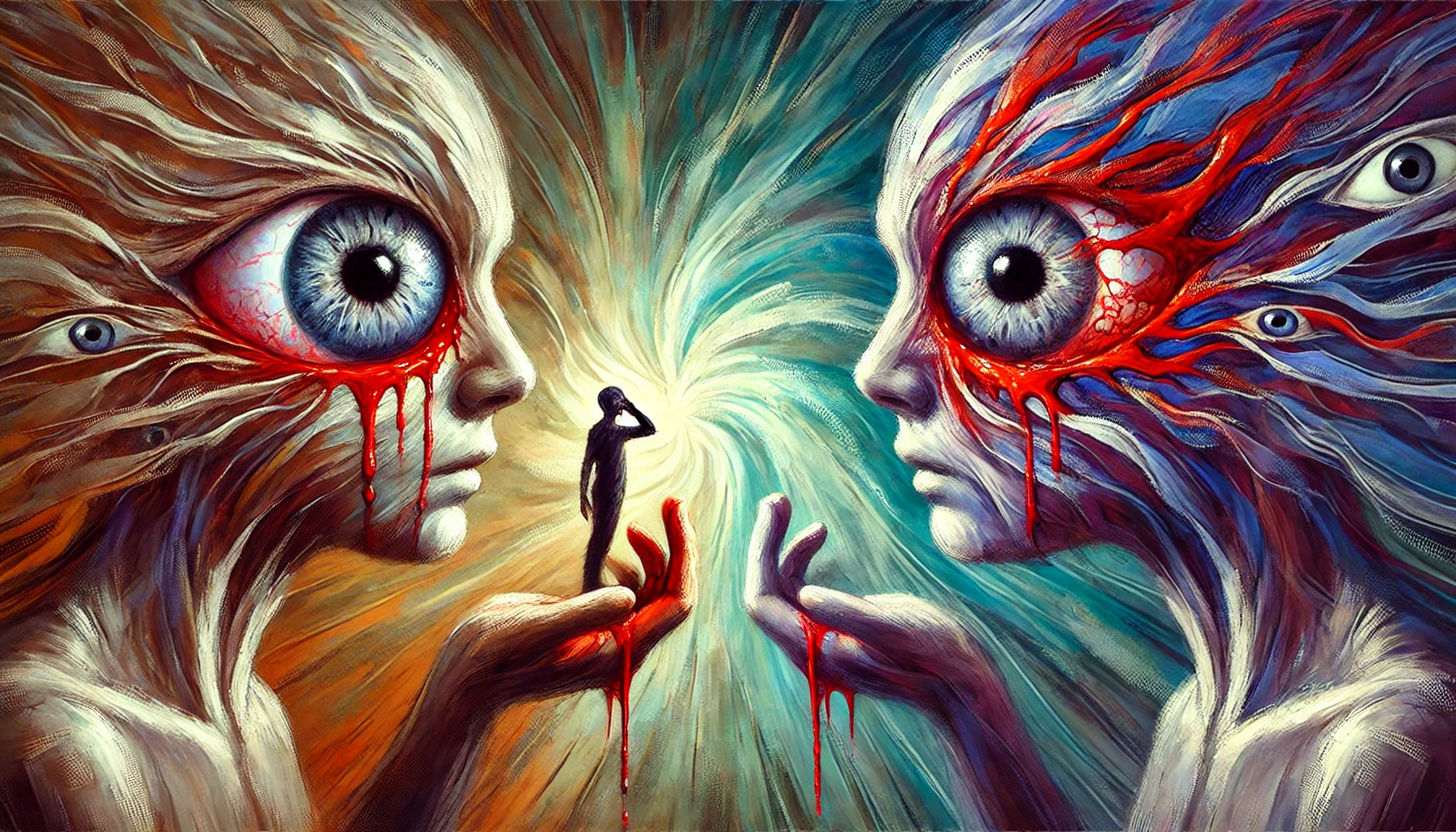

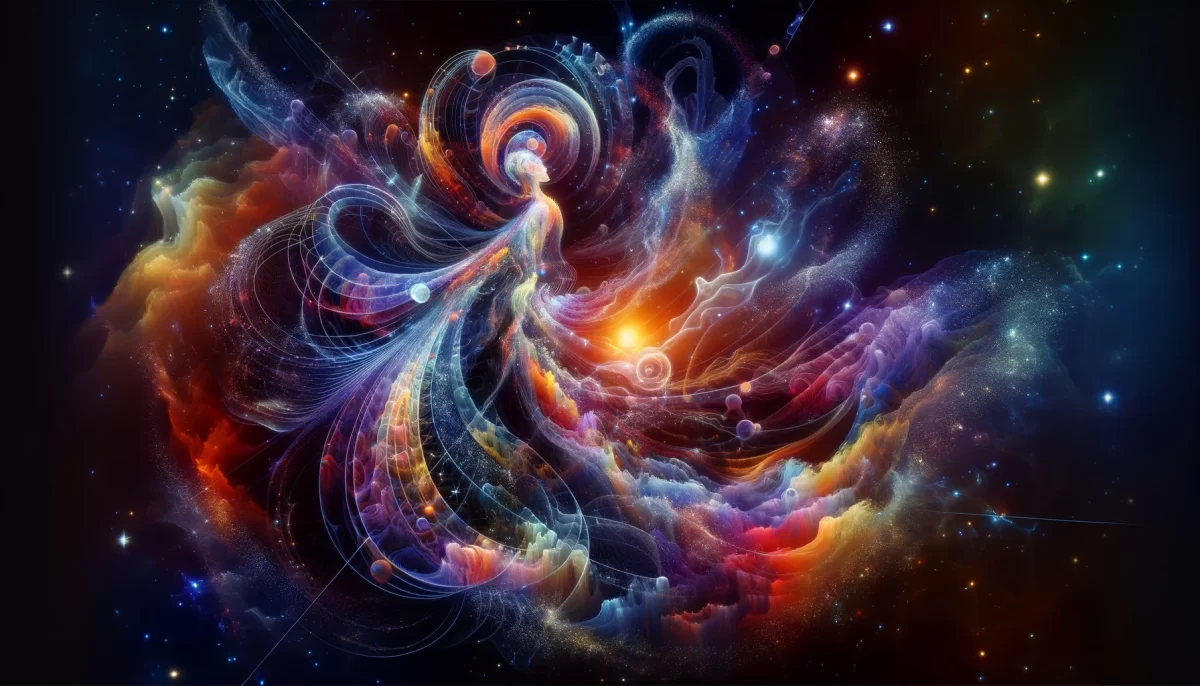










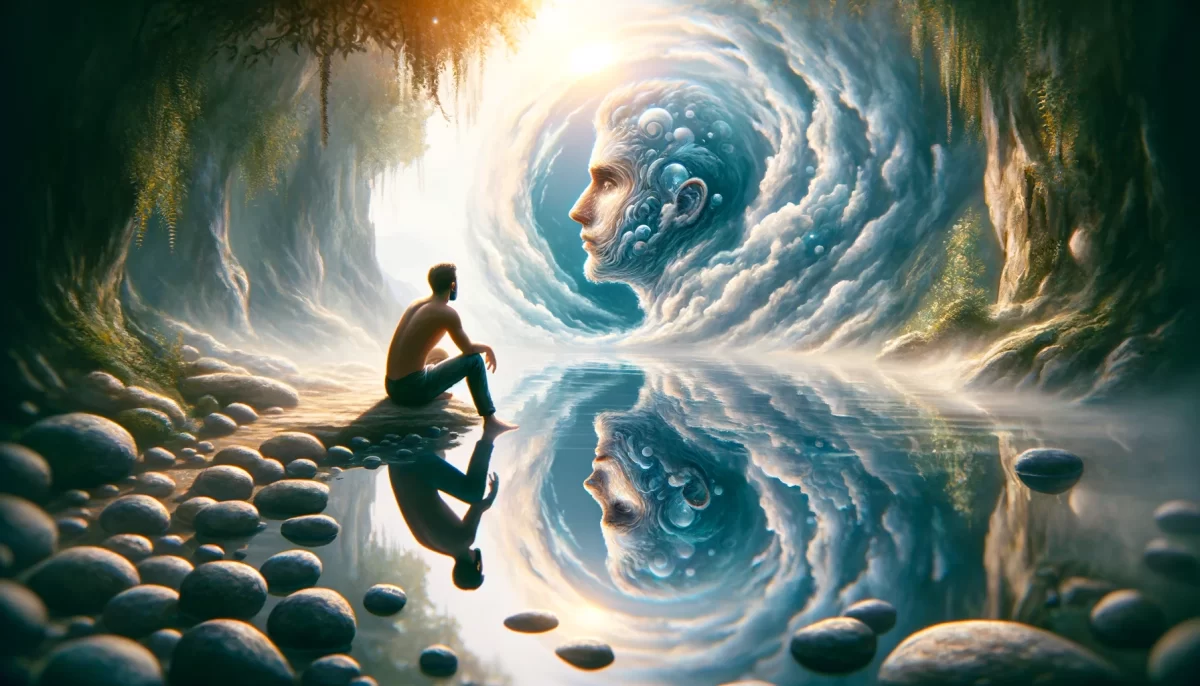
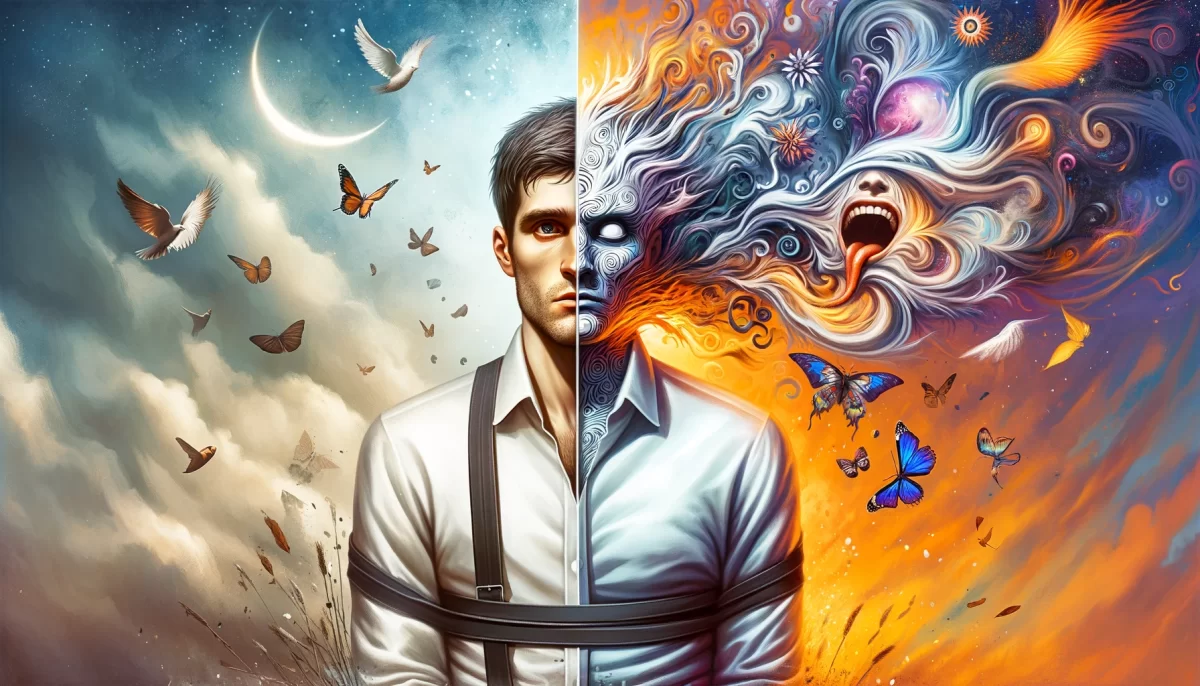

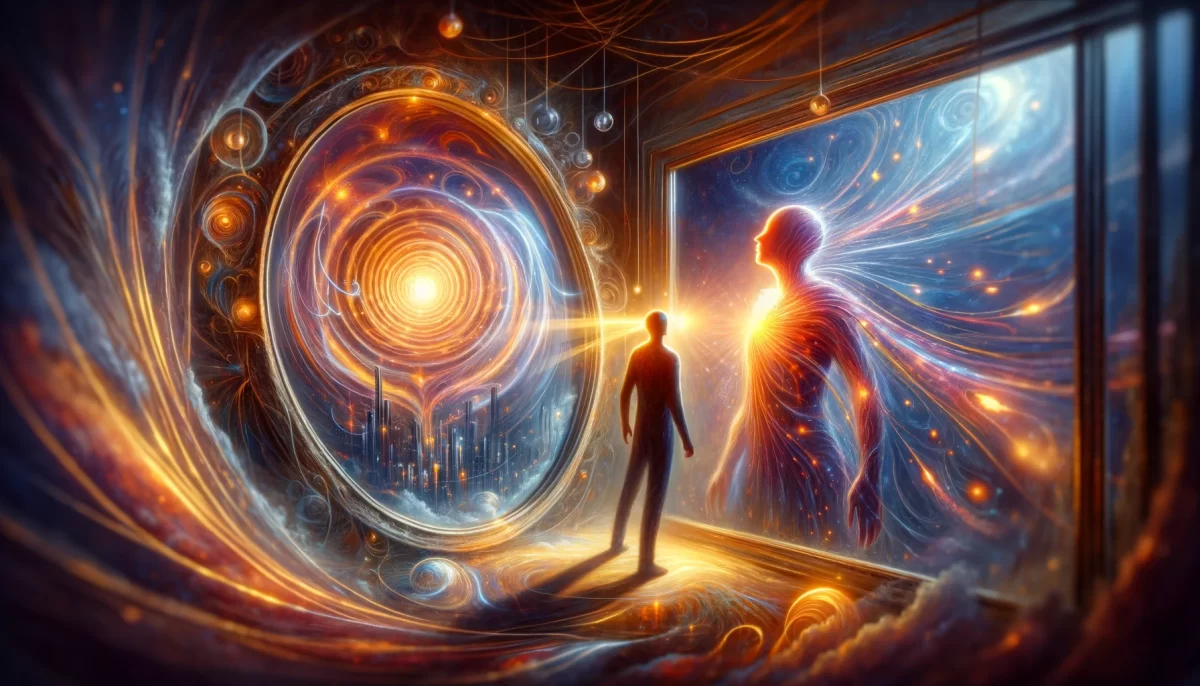
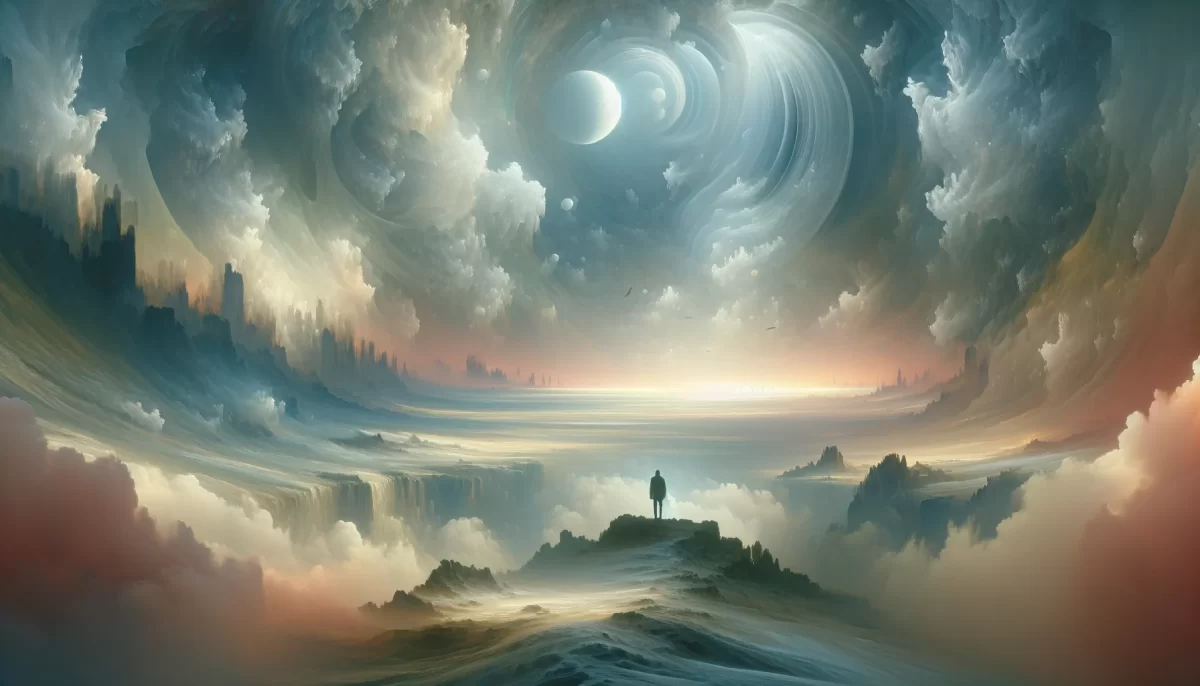
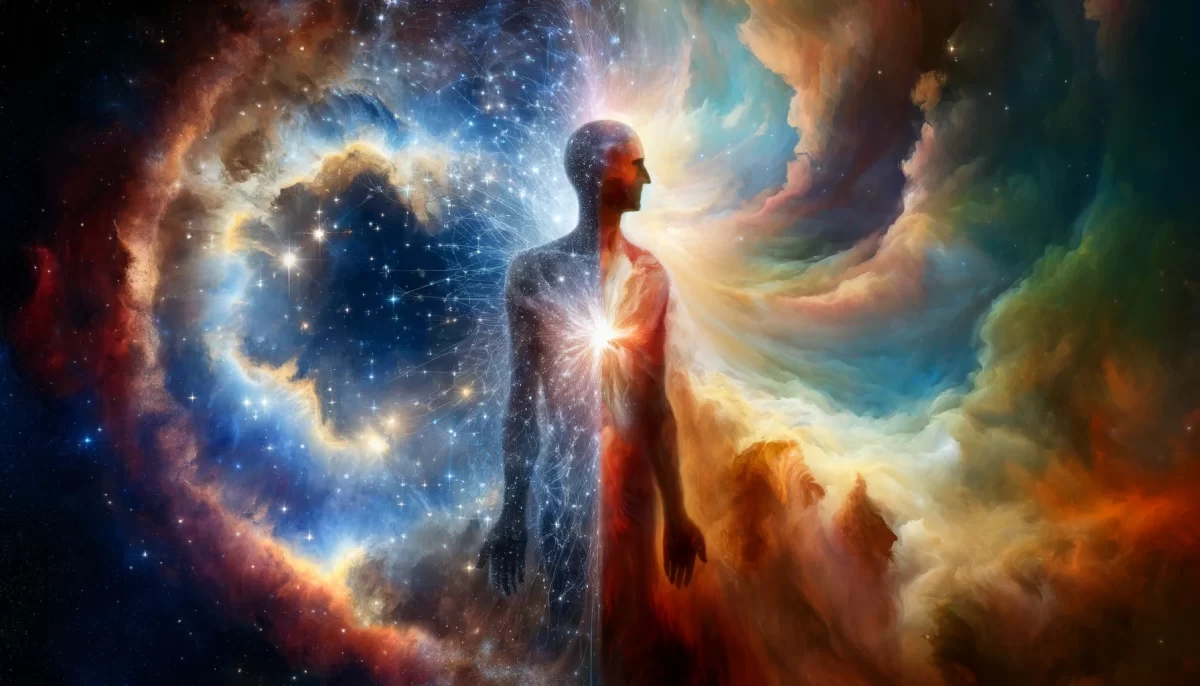






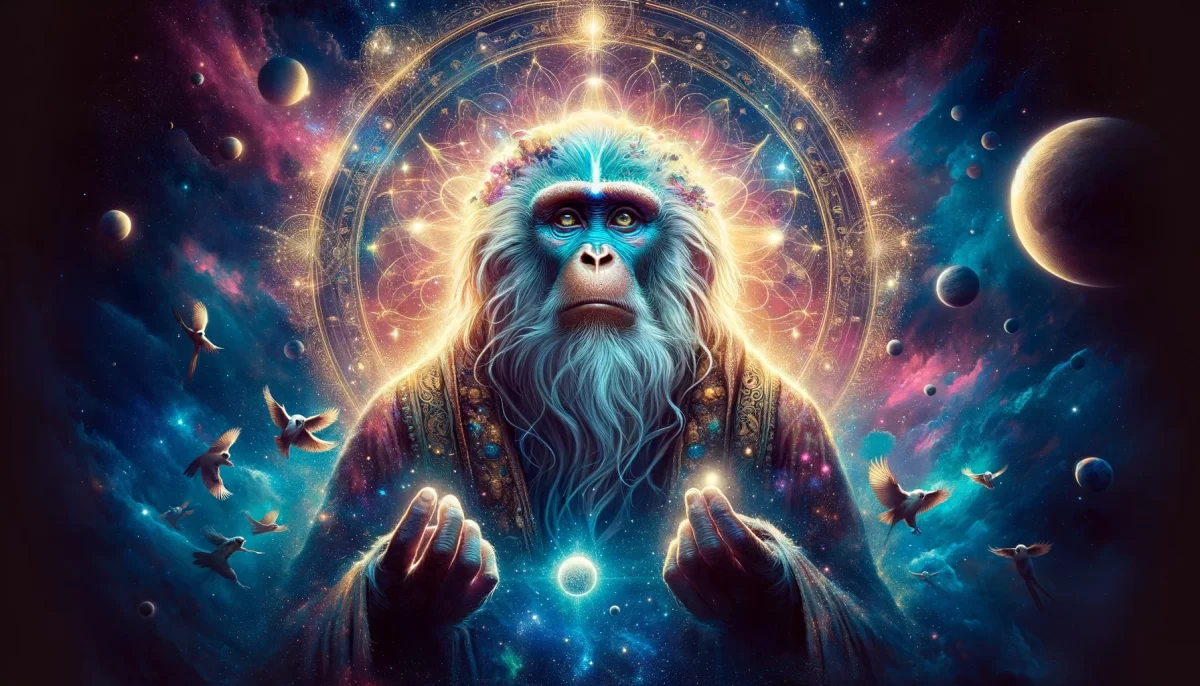
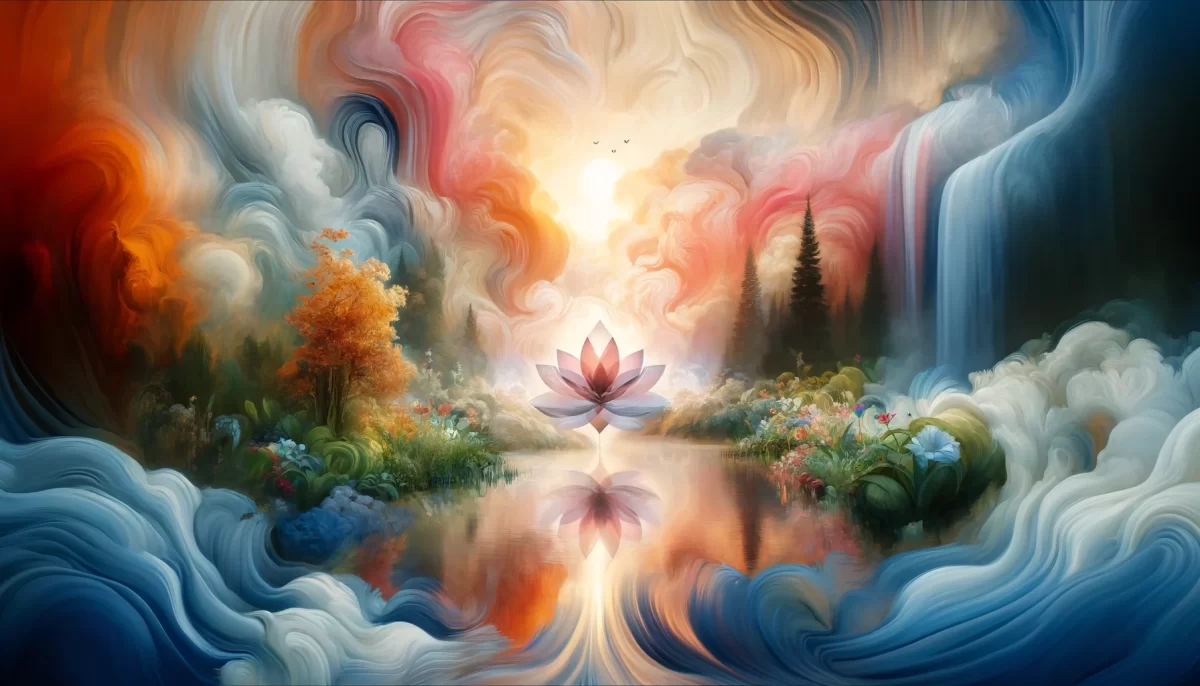
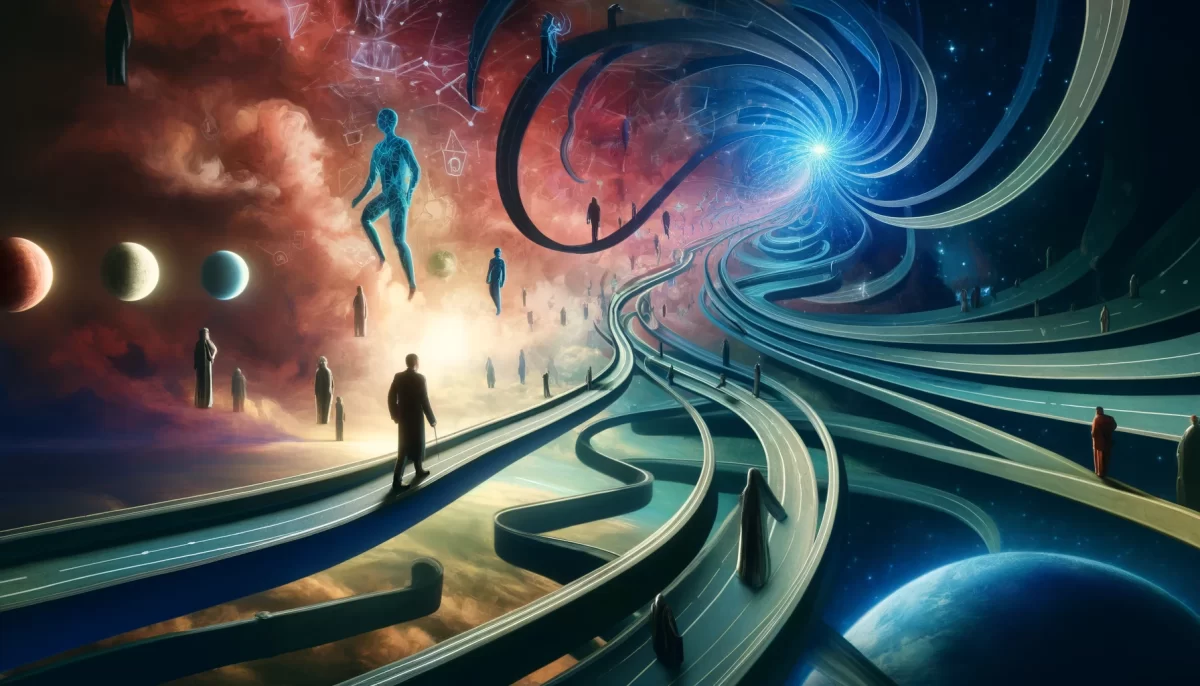
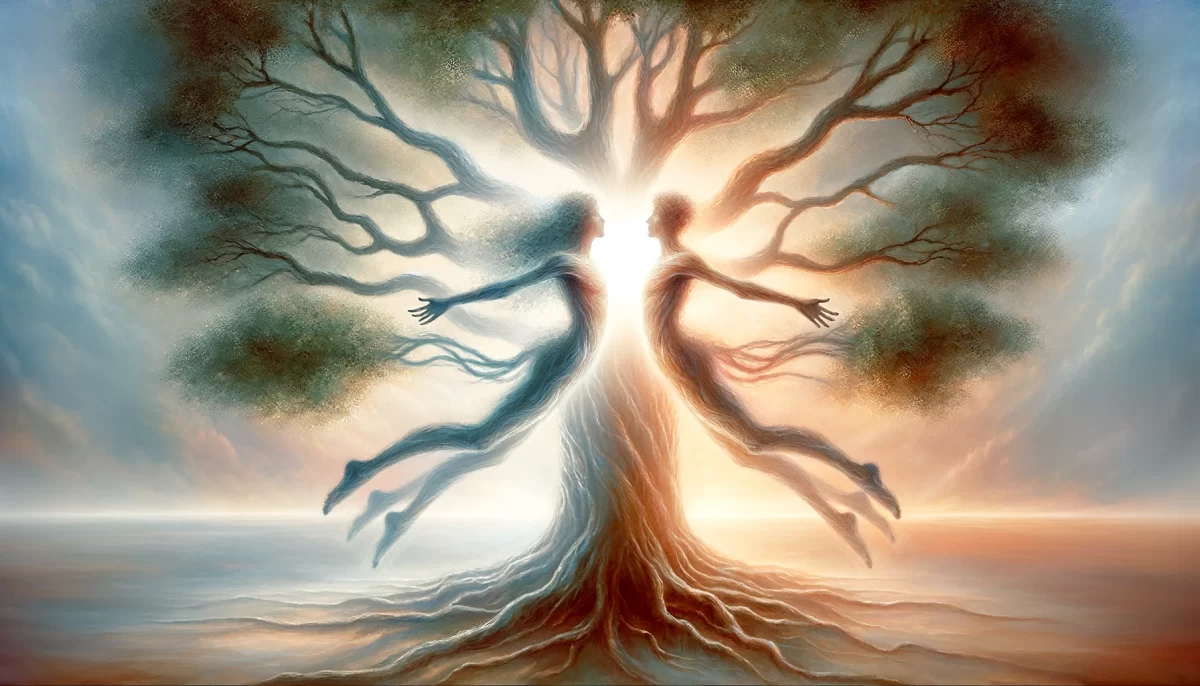
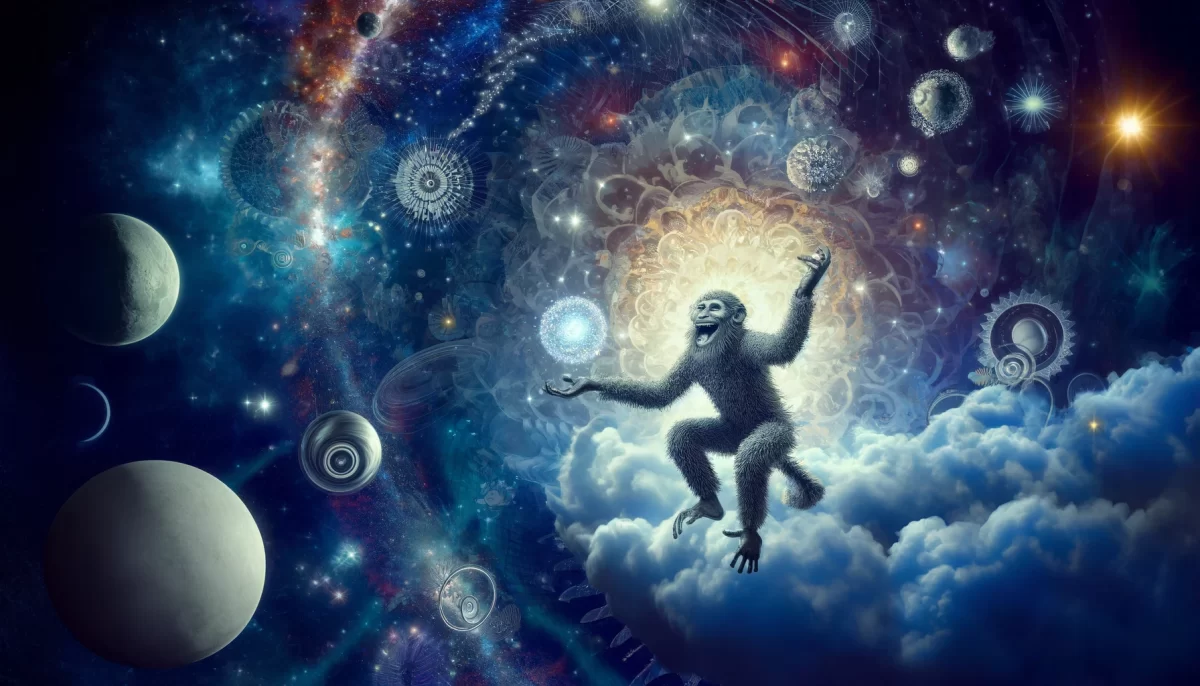
Leave a Reply